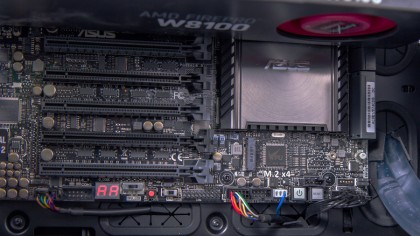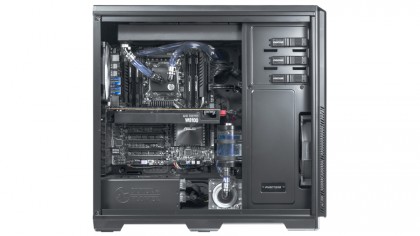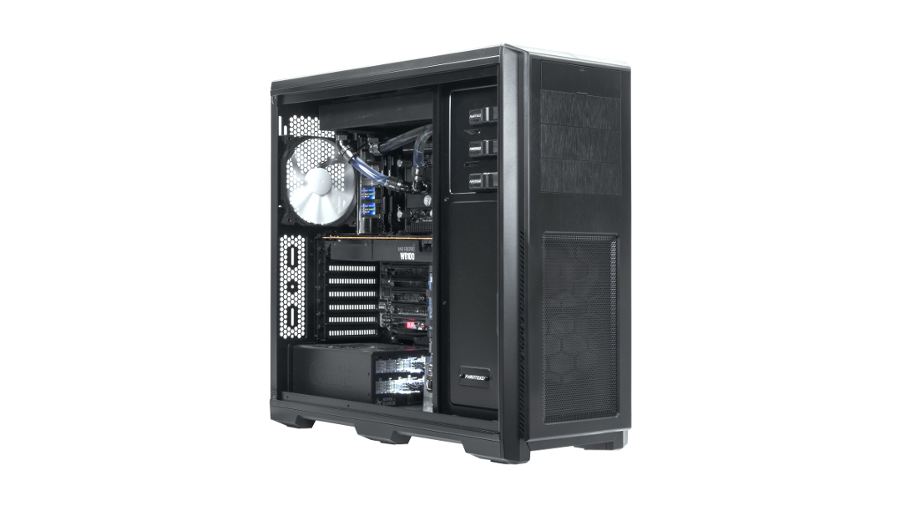Why you can trust TechRadar
Warranty and support
When risk-averse IT managers makes purchasing decisions, independent workstation vendors are less of a safe bet than larger, global workstation manufacturers. Being smaller fry in a giant corporate pond is a turn off.
To counter this inherent disadvantage, independent vendors offer a more specialised service. You won't find the Dells or HPs of this world selling water-cooled systems, you get a bit more control over the exact specification, and the warranty at least has to match the big boys.
As with a few other aspects of its RENDA brand, Overclockers is trying to go one better than its competitors, probably because it's so new to the market. A five-year warranty, rather than the typical three is on offer, with the first three years as collect and return, although as of writing Overclockers is not offering on-site engineers.

Performance
I ran all the usual standard TechRadar Pro benchmarks on the PW-E7F, along with some tests more suitable for workstations.
The standard benchmark results were as follows:
- 3DMark: Fire Strike: 7668; Sky Diver: 26582; Cloud Gate: 37119; Ice Storm: 190316
- Cinebench 15: CPU: 1717 points; Graphics: 191.07 fps
- PCMark 8 (Home Test): 4967
- PCMark 8 (Accelerated): 5575
Cinebench 15 is equally effective for testing gaming PCs and business machines, and is a superb early show for the RENDA. 1717 points in the CPU test reflects both the high clock speed and the eight cores of the Core i7-5960x.
The OpenGL test gave a similarly great result, hitting 191.07 fps. That's a brilliant score, which reflects how the graphics card has a bit of extra headroom when paired with a processor running at 4.3GHz. These are some of the best scores I've recorded from a workstation.
Sign up to the TechRadar Pro newsletter to get all the top news, opinion, features and guidance your business needs to succeed!
The 3DMark results show equally good performance, but being weighted towards gaming, aren't particularly worth paying too much attention to.
It's SPECviewperf 12 which really demonstrates the strength of a powerful workstation such as the PW-E7F. In these tests, AMD FirePro cards tend to fare better in the Maya-04 section, while Nvidia Quadro cards have traditionally done better in the other sections, although this has recently changed with Nvidia's brand new top-end Quadro M6000 graphics card delivering a serious boost to this aspect of performance. This is worth noting for Maya users.

The PW-E7F scored 78.65 in Maya-04, where a similar workstation with an Nvidia Quadro K5200 managed 64.72. In the Catia-01 section though, AMD's W8100 falls behind a bit with 64.96 recorded by the PW-E7F compared with 87.99 from that same Quadro-powered system.
A final test is Luxmark, an OpenCL-based ray-tracing benchmark, which is a great indicator of compute rendering performance. The RENDA PW-E7F managed a score of 1193 in the Room GPU test, with 23832 in the Sala test and 18500 in the Luxball HDR test.
These figures compare really well with other high-end workstations. The combination of an overclocked Core i7-5960x and high-end GPU pushes performance way ahead of the vast majority of Xeon-based workstations, with a high clock speed, eight processor cores to handle multi-threaded tasks and great OpenCL performance.
